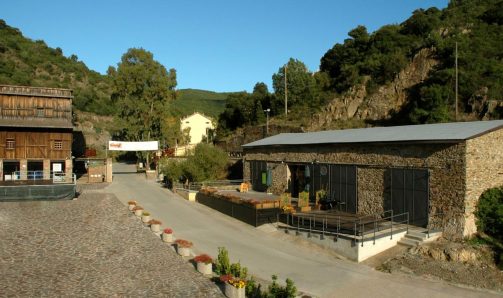Narcao is a town in lower Sulcis of over three thousand inhabitants, whose undulating territory stretches between ‘jar’ shaped mountains covered with Mediterranean scrub, oaks, and pine and eucalyptus forests. The first settlements in the area date back to the Neolithic period. The landscape is dotted with remains of prehistoric habitation structures, dolmens and menhirs, as well as pieces of obsidian.
Dating from the Ancient Bronze Age is the large protonuraghe Atzei, with a ‘corridor’ structure. In the hamlet of Terraseo, the remains of a Punic temple dedicated to Demeter and Kore can be seen: clay statuettes representing the goddess were found in an altar. Benedictine monks were the first to occupy the fertile countryside of Narcao around 1000: to them we owe the bell tower of the parish church of St. Nicholas, patron saint celebrated in mid-August. The center experienced a prosperous period until the 14th century, then became depopulated. At the end of the 17th century, farmers and shepherds settled there: symbolizing the conformation of the nuclei of houses is the medau or furriadroxiu (small rural agglomeration) of is Meddas, a hamlet of the town, which retains its original structure: a central courtyard overlooked by low peasant houses and landowner’s mansion. The rural dwellings thickened to create the present town, characterized by mud-brick houses decorated with murals depicting scenes of life in the mines. It is no coincidence that Narcao was a protagonist of mining activity in Sulcis: the territory is dotted with disused mines, nestled among the Terrubia mountains and included in the Geominerary Park of Sardinia: lead, copper and zinc were extracted here from 1851 to 1978. Buildings and structures have been renovated and transformed into an ‘open-air’ park-museum set in an unspoiled landscape with trails for trekking, mountain biking and horseback riding. In the laveria square, the heart of the village, you can see former post office and management (now a restaurant), furnace and storage depots, forge (now a bar), guest quarters and miners’ quarters, which have become vacation homes. The mining village of Rosas is both an engineering and anthropological exhibition: tunnels, ‘shafts’ and mills (in working order) for processing ore document the technological development, multimedia rooms with illustrative panels and equipment retrace the mining epic, and the miners’ own voices tell of working conditions and the lives of workers and families. The town is famous artistically: since 1991, the Narcao Blues, a nationally acclaimed music festival featuring world-class performers, has been staged at the end of July.


